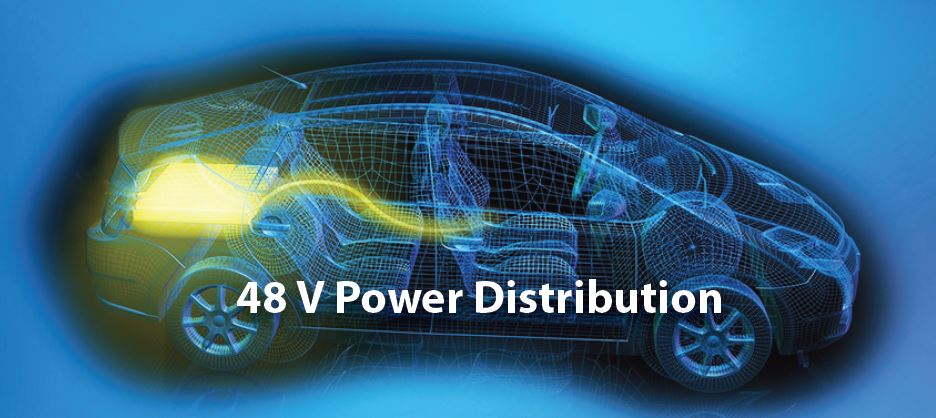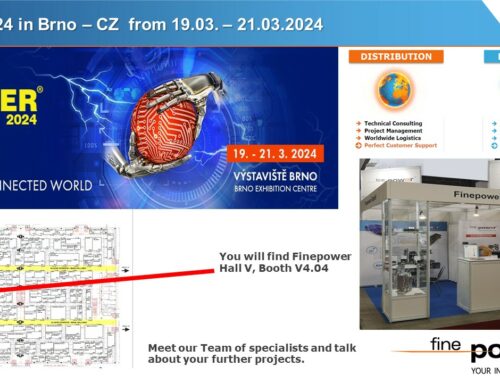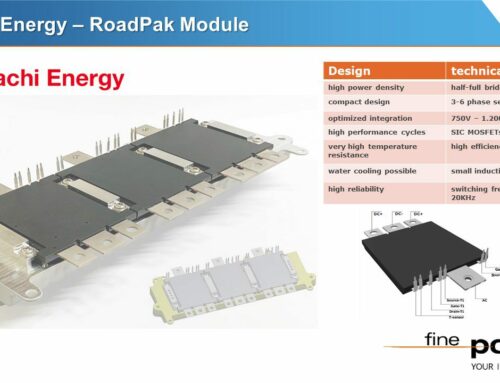Developers are evaluating the use of GaN components in cost-sensitive applications such as power supplies or in the automotive sector. This is because in a strong value chain, the production costs for the wide-bandgap semiconductor could be reduced.
Although the Wide-bandgap semiconductor GaN (gallium nitride) has only been available for commercial use as the basis for power components in power electronics since 2010, a large number of new applications have already been realized. Since the production costs of GaN semiconductors are now in a range that is profitable even for conservative developers, they are not averse to the use of the GaN wide-bandgap semiconductor.
GaN as new leading technology in power electronics
In order for a new technology to be able to maintain or establish itself on the existing market, it must meet the following four criteria:
- It must facilitate new applications
- Simple use must be possible
- A high degree of cost-efficiency must be ensured
- It must be highly reliable
If one compares the GaN components available today with the silicon solutions used, it is possible to see that their usability is improved by a factor of five to 50. This insight in turn led to new technologies, which were only made possible by the basic length of the GaN wide-bandgap semiconductor. Concrete examples include Lidar (Light Detection and Ranging) for autonomous cars, remote-controlled drones and industrial automation. The first criterion is thus fully met by gallium nitride.
The second criterion concerns ease of use. Power converters based on gallium nitride have higher efficiency, higher power density and lower overall system costs than silicon-based alternatives. The wide-bandgap semiconductor GaN therefore also fulfils this criterion, and incidentally outshines silicon-based components.
The manufacturing of GaN transistors as well as integrated circuits is similar to silicon power MOSFETs, but involves much fewer processing steps, which consequently leads to a more significant cost efficiency. Also, more devices can be produced as they are much smaller than their silicon counterparts. Another not insignificant cost factor is the necessary protective packaging of the sensitive silicon predecessor at voltage values below 500 V. This is not necessary for GaN transistors. This cost advantage alone reduces the manufacturing costs by 50 %.
The final criterion is the reliability of the new technology – for this purpose, the JEDEC standard tests for semiconductors must be passed. GaN components can handle these without problems. Even the stricter qualification requirements of the automotive industry (AECQ-101) do not pose a problem in most cases. In summary, the GaN wide-bandgap semiconductor not only meets all four criteria, but is also superior to its silicon predecessor in all respects.
GaN for 48 V DC/DC converters
The use of 48 V DC/DC converters is ubiquitous nowadays. They are used for example in cloud based hyperscale data centers and artificial intelligence as well as the advent of 5G. Gallium nitride or GaN FETs and ICs offer higher power density and more efficient 48V power supply due to their improved switching performance. Power supply designers have also come to this conclusion, which is why gallium nitride is increasingly being used. Progress in the automotive industry also calls for more efficient solutions for compact systems. GaN transistors are therefore the ideal solution for the 48 V supply of hybrid vehicles. The systems can be developed more cost-effectively using GaN and are also significantly lighter than alternative solutions available. The most important aspect, however, is probably the significant increase in efficiency, which could only be made possible by GaN technology.
GaN as basis for Lidar
One of the probably most important technological achievements in autonomous driving is Lidar. This could only be realized by the use of GaN, more precisely GaN components. Here, the Lidar sensors emit light pulses and thus measure the reflections. This method enables the positions and distances of surrounding objects to be measured. One of the most important technological achievements in autonomous driving is lidar. This could only be realized by using GaN, or more precisely GaN components. Here, the lidar sensors emit light pulses and thus measure the reflections. By this method, the positions and distances of surrounding objects can be detected. So if lidar systems are used in vehicles today, they can be called the eyes of the car. However, in order to enable a sufficient range of the light or laser pulses, complex circuits and expensive semiconductors have been required. Due to the progress of GaN technology, it has been possible in recent years to manufacture more cost-effective GaN power FETs and ICs and to use them for this purpose. The decisive advantage over previous silicon MOSFETs, however, was a significantly lower inductance with up to ten times higher switching frequencies.
GaN in precision motor controls
E-bikes, e-scooters, drones, robotics – these are all examples in which precise motor drives are increasingly being used. Here, a brushless direct current motor (BLDC) offers a lot of power, precise control and high efficiency in a small installation space. The motors are driven by inverter circuits that use traditional MOSFETs. If we now compare the typical silicon MOSFETs with the GaN-FETs, the GaN-FETs have a significantly higher switching frequency. The result is a higher positioning accuracy and increased efficiency. Other advantages of using GaN in precise motor drives would include the following:
- greater power
- less required space
- shorter response times
- Reduced weight of the motors
Gallium nitride as technology of the future
The performance of GaN FETs is already increasing rapidly and is far from reaching its limit. The theoretical performance limit is still a factor of 300 away, which indicates a strong growth potential in the coming years. EPC has been supplying the necessary GaN transistors for a decade and has over 100 billion hours of field experience, which speaks for itself. The failures compared to the mature silicon-based MOSFETs are significantly lower – in short, gallium nitride (GaN) is smaller, faster and more reliable.
Read the complete detailed article by Tobias Herrmann and Jieyi Zhu here
The article is also published in elektronik journal 04/2020.






